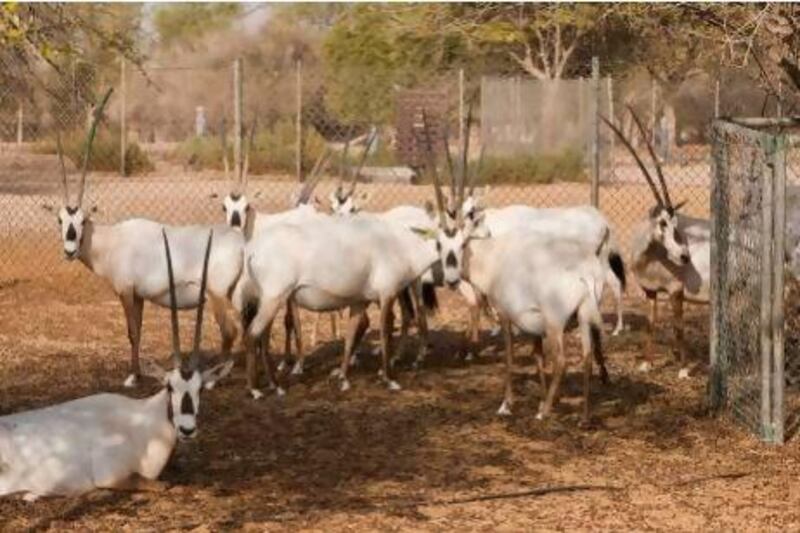DUBAI // Research being carried out at Wadi Al Safa Wildlife Centre could be crucial in protecting Arabian oryx from a deadly disease.
Peste des petits ruminants (PPR) is a highly contagious virus that primarily affects goats and sheep.
Oryx are also susceptible, and there are concerns it could spread from the country's large goat population.
PPR, also known as goat plague, occurs across parts of Africa, the Middle East and the Arabian Peninsula. Last year, Abu Dhabi Food Control Authority launched a spraying and immunisation campaign to control the spread of the disease.
There is a vaccine, but while the effective dosages for goats and sheep have been established, the doses and frequency of administration required to protect oryx are not known. This study is intended to determine the correct levels.
"PPR has been found in goat herds in the UAE and it's something we're concerned about," said Declan O'Donovan, Wadi Al Safa's director of wildlife services. "We want to make sure we're giving the oryx enough vaccine.
"Will the recommended dose for sheep and goats be successful in Arabian oryx? Nobody knows, so we've put a number through a clinical trial."
Twelve oryx were vaccinated and three kept as control animals. A month later, five of the twelve were given a booster vaccination. The animals were tested regularly for a year to check the levels of PPR antibodies in their blood, a process that enables the effectiveness of a vaccine to be measured.
"Currently this data is being analysed and recommendations from the findings will be published in a scientific journal," said Mr O'Donovan.
The results will be useful for all collectors, zoos and wildlife parks that keep oryx.
There are a number of large herds in the UAE - Wadi Al Safa and its satellite sites, for example, have more than 300.
The animal was hunted to extinction in the wild 40 years ago, but today it is thriving thanks to captive breeding and reintroduction programmes.
The PPR research is the latest in a series of disease studies carried out at the centre since it opened in 1998.
Subjects covered include foot-and-mouth disease, ailments that affect gazelle and feral cats, and the distribution of the mountain gazelle. There have also been a number of other studies involving oryx.





